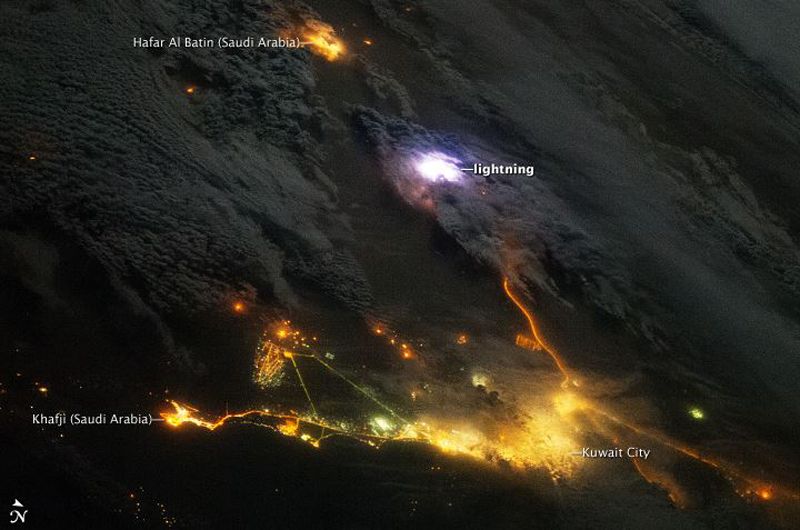Stunning Lightning Above Mideast Seen from Space (Photo)

This stunning image of a lightning strike over Kuwait was captured last December by an astronaut aboard the International Space Station (ISS) and released today (March 24) by NASA's Earth Observatory. The ISS recently installed a new instrument to help study the physics and composition of such bolts in detail on a daily basis.
Lightning bolts flash across Earth's atmosphere as often as 50 times per second, which adds up to about 4.3 million times a day and 1.5 billion times a year, NASA officials wrote in an image description. Some of those strikes emit gamma radiation — a type of radiation more commonly associated with exploding stars and nuclear fusion — in bursts known as terrestrial gamma-ray flashes (TGFs). The scientists will use the new lightning imagery and data from the ISS to try to understand what triggers lightning during storms in general, and what causes these rarer bursts of TGFs. [Electric Earth: Stunning Images of Lightning]
"The fact that TGFs exist at all is amazing," Doug Rowland, a space physicist at NASA's Goddard Space Flight Center involved in this new lighting research, said in a statement. "The electron and gamma-ray energies in TGFs are usually the domain of nuclear explosions, solar flares, and supernovas. What a surprise to find them shooting out of the cold upper atmosphere of our own planet."
Researchers think these TGFs may be related to enigmatic red bursts of lightning called red sprites, which travel upward from thunderstorms and can take on ornate shapes that look like jellyfish. Red sprites are just one of several types of lightning that researchers are still working to understand the origin of. In fact, lightning, in general, is a mysterious phenomenon, with scientists still not sure exactly how lightning forms, though the working hypothesis suggests it forms when an updraft of warm air reaches a height where the temperature is just above freezing; at this point, ice crystals and frozen particles interact with each other to produce an electric charge separation; when that separation becomes great enough an electrical breakdown occurs — a lightning flash.
Follow Laura Poppick on Twitter. Follow us @livescience, Facebook & Google+. Original article on Live Science.
Sign up for the Live Science daily newsletter now
Get the world’s most fascinating discoveries delivered straight to your inbox.













